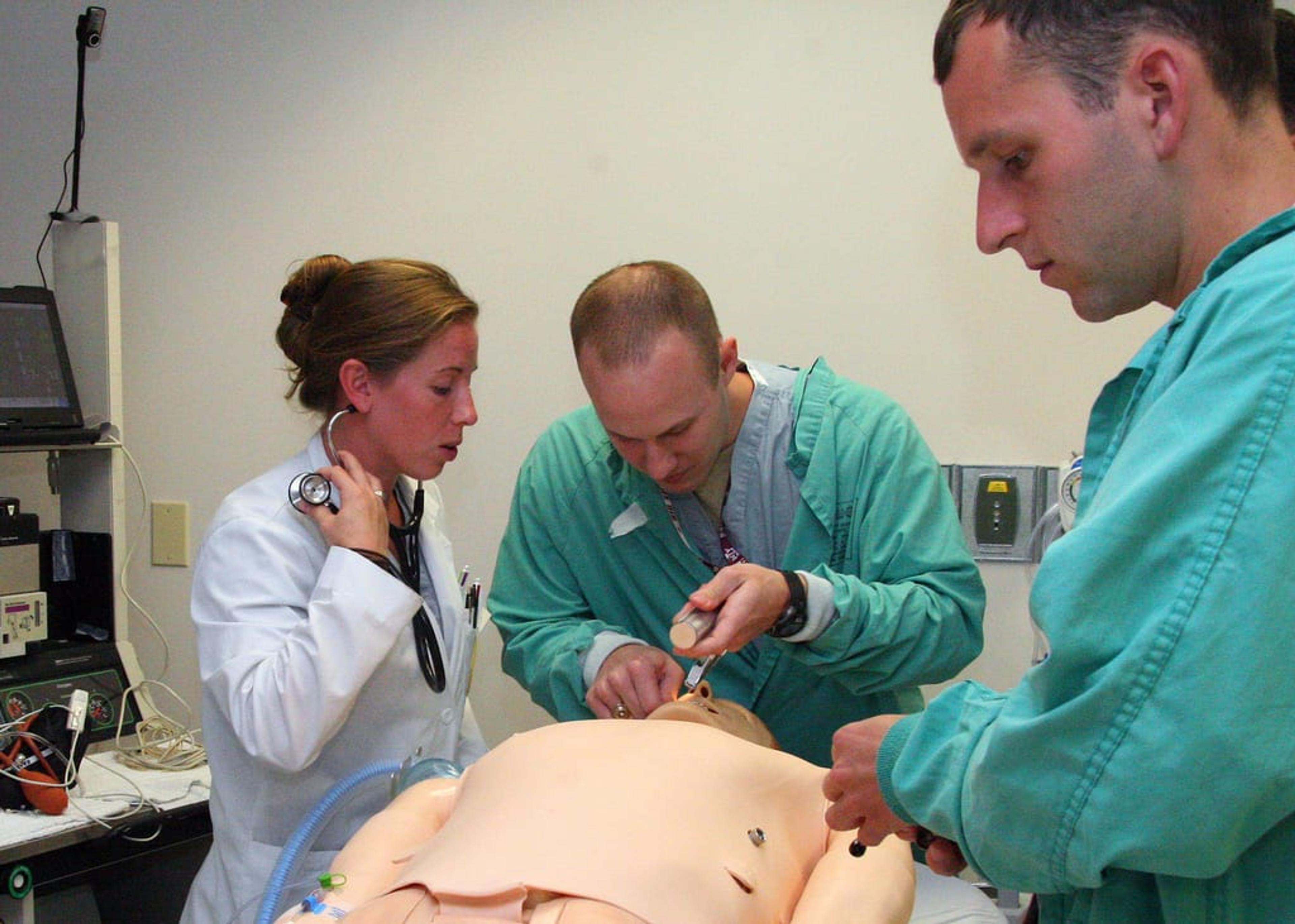Panel: Addressing Health Care Talent Pipeline Shortages Requires Collaboration, Innovation
Julie Bitely
| 3 min read

An aging population will likely cause a strain on the health care system in coming years. By 2030, it’s anticipated that there could be a shortage of between 40,800 to 104,900 physicians alone in the United States, according to Norman Beauchamp, dean of the Michigan State University College of Human Medicine. Anticipating and preparing for all levels of health care staffing needs has to be a collaborative effort between educators, providers and community partners, Beauchamp and other West Michigan and state leaders agreed. Efforts toward shoring up the health care talent pipeline was the topic of the most recent Health Forum of West Michigan. Community conversations are held the first Friday of every month at Grand Valley State University, sponsored by Blue Cross Blue Shield of Michigan and Blue Care Network. Wanda Stokes is the director of the Michigan Talent Investment Agency, created by Governor Rick Snyder in 2014. She said there are currently 12,422 health care jobs posted on the Pure Michigan Talent Connect website, representing 12 percent of all available positions on the site. By 2024, health care occupations are expected to grow by 11.9 percent, Stokes said. To ensure the talent is ready to meet the available jobs, Stokes said TIA is working regionally across the state with educational institutions, employers and health care providers to distribute necessary training funds and support. Leaders at Grand Rapids Community College and Grand Valley State University said they keep a close eye on trends in health care staffing needs in order to offer the right programs to properly prepare students for health care careers. Listening to input from employers and community partners plays an important role in the development of new programs. “We only offer programs … where we do have need,” said Maria Cimitile, provost and executive vice president for Academic and Student Affairs at Grand Valley State University, where nearly one-third of students are enrolled in health care programs. Community colleges play an important role in training students for professional health care careers that don’t necessarily require a four-year or higher degree. Laurie Chesley, provost and executive vice president for Academic and Student Affairs at Grand Rapids Community College, said along with preparing students for work, GRCC also provides an affordable springboard for some students who do want to pursue a four-year university degree. Ultimately, these newly minted professionals will work in a health care setting. Pam Ries, senior vice president and chief human resources officer at Spectrum Health, said the West Michigan health care giant also spends a lot of time identifying their future needs. Recruiters attend career fairs looking for qualified applicants to fill skilled trade positions within the organization and actively work with local colleges, high schools, and veterans groups to help develop a robust talent pipeline. “We have to make sure we have the right talent in place,” Ries said. Apprenticeships exist for upcoming medical assistants and a new surgical tech apprenticeship option will launch soon, Ries said. The organization is also heavily focused on employee retention and succession planning as a means to control human resources costs. Beauchamp said MSU is preparing its physicians for a health care field that is more collaborative and that places a higher importance on a value-based model of care. The school is also actively working to address issues of diversity and inclusion when it comes to the race, gender and socioeconomic status of its residents. If you’re interested in future Health Forum of West Michigan events, visit their website to register. If you enjoyed this post, you might also like:
- Short on Qualified Staff? Consider Hiring Retirees
- Employee Burnout: Simple Ways to Spot and Stop It
- Leaders Need Self-Care Too
Photo credit: Army Medicine





